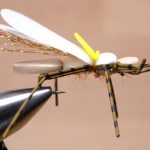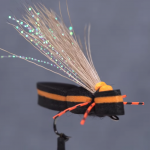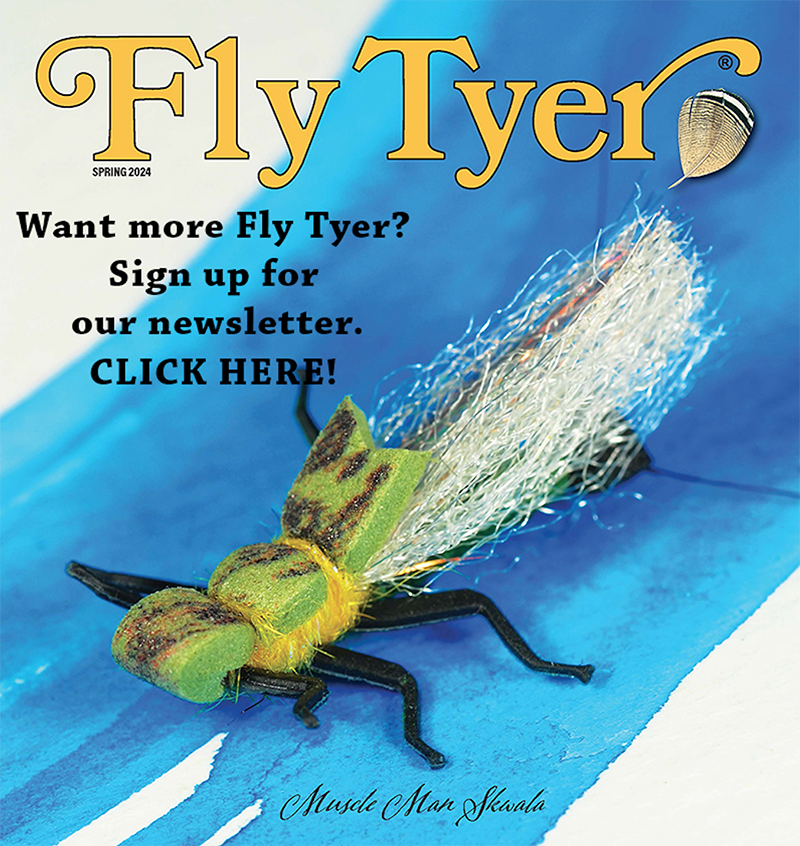Tying parachute dry flies is challenging. Follow these steps, and you’ll quickly master making this important style of pattern.
[by Tim Flagler]
Isonychias are mayflies we call slate drakes. Although somewhat sporadic, this is one of my favorite hatches of the year. Here in New Jersey, the hatch usually starts in early June and often continues well into November. There never seem to be huge numbers of insects, but they stay around for a long period of time. My guess is the trout simply get used to seeing them and eat them whenever the occasion arises.
My Parachute Isonychia obviously imitates the dun, but I also think it does an okay job of matching a spinner. I’ve had the most success fishing this fly late in the day and well into dark. It now surpasses the Rusty Spinner as my favorite nighttime dry fly.
The tying procedure shown here is a bit different from many other methods for tying parachute dry flies, and is particularly suited for making imitations of larger mayflies such as Isonychias or other drakes. By resecuring the hook in your vise with the shank in the vertical position and the eye pointing down, you will gain a big advantage when tying the wing post and wrapping the hackle. The other cool part of the tying procedure is using the hackle stem to add structure when wrapping the thread to produce the wing post. Also notice that you are making the wing post and securing the hackle stem at the same time rather than as two separate steps.
You may disagree, but wrapping the hackle up the post and then back down works remarkably well and traps fewer hackle fibers than you might think. You can whip-finish the thread directly on the base of the post, but I prefer doing it behind the hook eye; this traps fewer hackle fibers and I’m not left with a band of thread at the base of the post beneath the wrapped hackle.
PARACHUTE ISONYCHIA
Hook: 2X-long dry fly hook, size 8.
Thread: Red 8/0 (70 denier).
Tail: Moose body hair.
Body: Isonychia-colored Spirit River Fine & Dry Dubbing or a substitute.
Wing: Polypropylene yarn. Hackle: Dun.
Fishing Tips
Fishing the Parachute Isonychia is a lot of fun. The polypropylene wing post is big and bright enough that you can see the fly on the water’s surface after dark. Even then, it’s usually a good idea to set the hook whenever you see or hear a trout rise in the general vicinity of your fly. The materials used and method of construction make the fly float well. Working a little liquid floatant, such as Loon Aquel, into the dubbing and wing post prior to fishing helps the fly float even better. After catching each fish, give the fly a swish in the water to remove any slime, blot it dry with an Amadou patch or something similar, brush on some desiccant such as Frog’s Fanny, and you’re good to go to catch another!
How to Tie a Perfect Parachute Dry Fly
Want to see it in action? Check out Tim’s instructional video of the Parachute Isonychia below.
Tim Flagler produces terrific fly tying and fishing instructional videos. Although he lives in New Jersey, Tim travels the country teaching fly tying classes. To see his videos, check out www.practicalpatterns.com.









